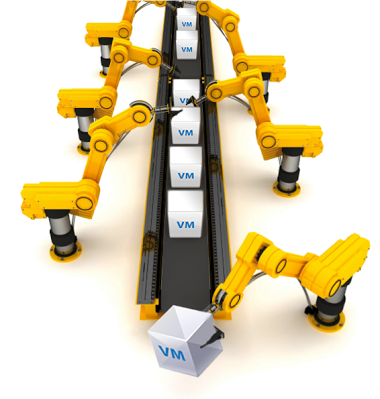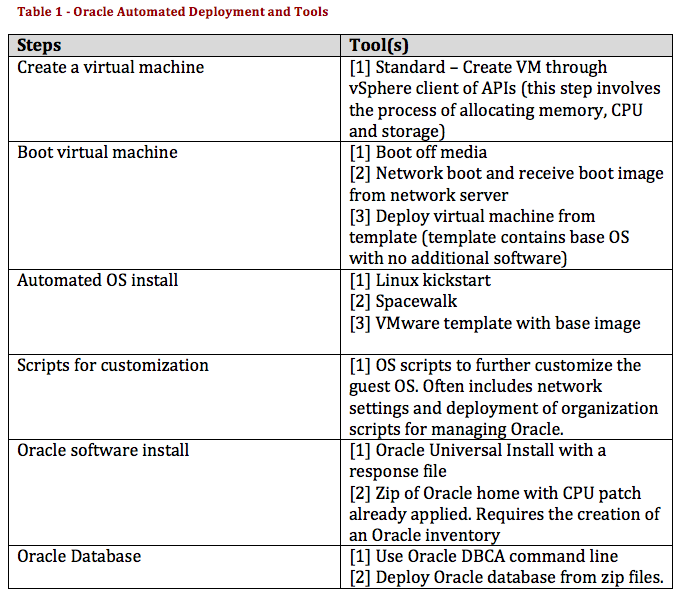Jim Hannan (@HoBHannan), Principal Architect

As virtualization adoption increases for Tier 1 workloads, many organizations are looking for ways to automate deployments. Oracle VM has touted this as one of its premier features (Users Can Deploy Oracle Real Application Clusters Up to 10 Times Faster with Oracle VM Templates). In my opinion Oracle has done a really good job with this. As a virtualization software provider, Oracle recognized early on the importance of automating the deployment of Oracle workloads. Oracle primarily does this with Oracle VM templates, which I believe have some shortcomings (these shortcomings are the same for VMware templates). Templates for both Oracle and VMware have the same concept. A virtual machine is created and the copied to a template for future deployments. The problem with templates is that are they are out-of-date within the next release of a security patch or organizational standard change. Managing and updating the template itself becomes a burden with dimensioning returns the older the template gets.
Many organizations have recognized the shortcomings of templates and have moved to automated deployments. HoB has had the opportunity to assist and help customers with automation. Each organization we have worked with has had a slightly different approach to the solution, but fundamentally they all used a similar approach.
Common Approach:
- Create a virtual machine (vCPU, memory, network)
- Boot the virtual machine (typically using a boot image)
- Begin automated OS install (most common for Linux is kickstart)
- Use scripts to further customize the build
- Install Oracle software (process varies)
- Create the Oracle database (process varies)
The table below contains the different steps as outlined above with the various tool options. Take note that in the tool column, I have added numbers, e.g. [1] or [2]. This represents different tools for the particular step.
In my next blog, I will do a walk through of some of the tools mentioned above.







